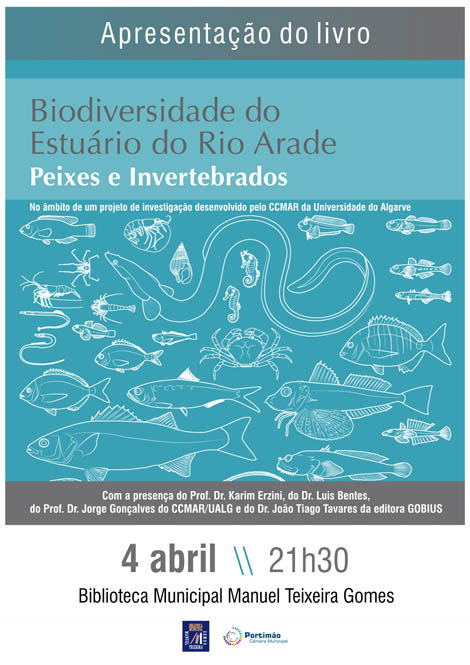 The scientific popularization book “Biodiversity of the Rio Arade Estuary”, which results from a survey carried out by the Fisheries Research Group of the CCMAR – University of Algarve, will be presented at the Manuel Teixeira Gomes Municipal Library, in Portimão, on April 4th .
The scientific popularization book “Biodiversity of the Rio Arade Estuary”, which results from a survey carried out by the Fisheries Research Group of the CCMAR – University of Algarve, will be presented at the Manuel Teixeira Gomes Municipal Library, in Portimão, on April 4th .
The presentation, scheduled for 21 pm, will be in charge of Karim Erzini, Luis Bentes and Jorge Gonçalves representing the CCMA, who will speak about the “Arade” project and the survey carried out in the estuary of this river, considered “one of the unexpected jewels of the nature of the Algarve coastal region”, because, according to the researchers, “it is home to an extraordinary and fascinating biodiversity, still little known by the vast majority of people.”
This edition includes a list with 104 species of fish and 186 invertebrates and intends to make known the estuary of the river that bathes Portimão, “an essential and urgent task” from the perspective of those responsible for this scientific work, since the biodiversity of the Arade “has an invaluable environmental, cultural, social and economic value, and must be protected and managed in a sustainable way.”
It is an ecosystem that provides the appropriate environmental conditions for the occurrence of hundreds of species of fish and invertebrates, such as sardines, sea bass, clams, spider crabs, octopuses or cuttlefish, among many others. Arade estuary important for the juveniles of these species, which find refuge and food there, ensuring their survival before venturing into the sea or rivers.
world-class research
The CCMAR Fisheries Research Group has been dedicated to the study of marine biodiversity and fisheries since 1992, having developed marine habitat mapping studies in lagoon systems such as the Ria Formosa, estuaries such as the Arade and Guadiana, underwater cannons such as the one in Portimão and São Vicente and underwater mountains such as Banco Gorringe.
In this line of research, the marine biodiversity maps of the Algarve coast developed are among the most complete at European level, with the group having published more than one hundred scientific articles in international journals of great impact and carried out dozens of international projects, training many scientists who work in the leading research institutes worldwide, while assessing fishery resources and impacts of various fisheries, being a pioneer in the study of recreational fishing in Portugal.
In addition to promoting long-range monitoring of fish communities in the Ria Formosa and Arade estuary, this group also discovered several new species for the Portuguese coast and some for science, and innovated in the field of marine biodiversity mapping from the perspective of integrated management of the maritime space.


















Comments